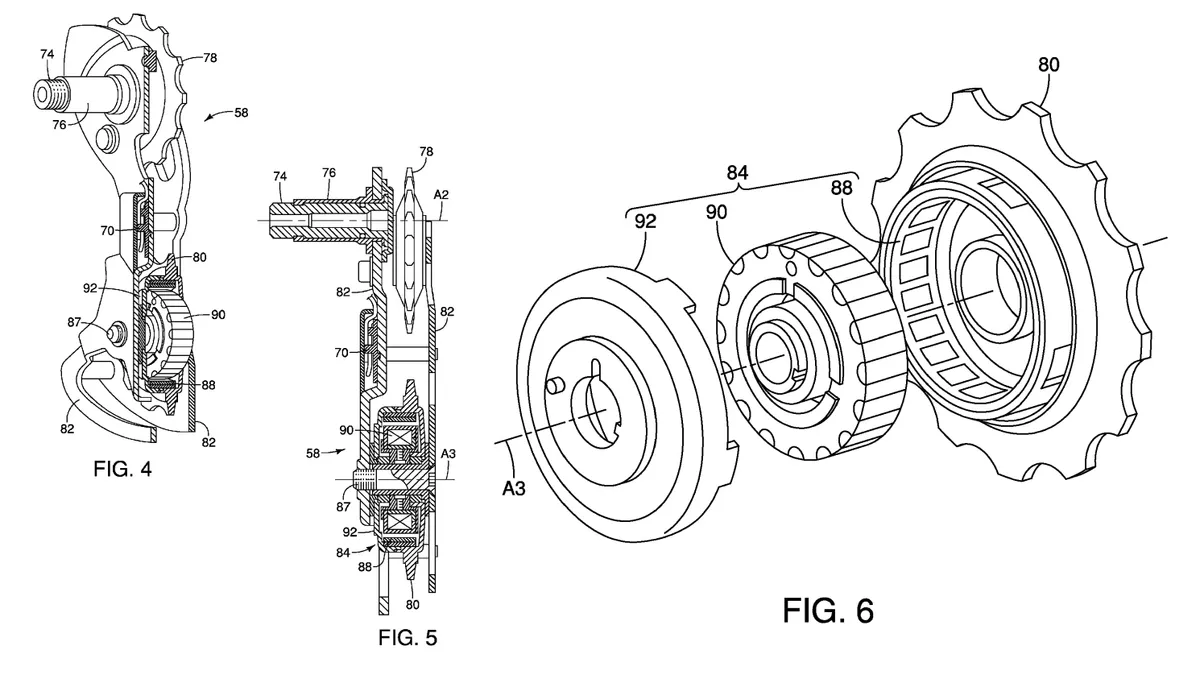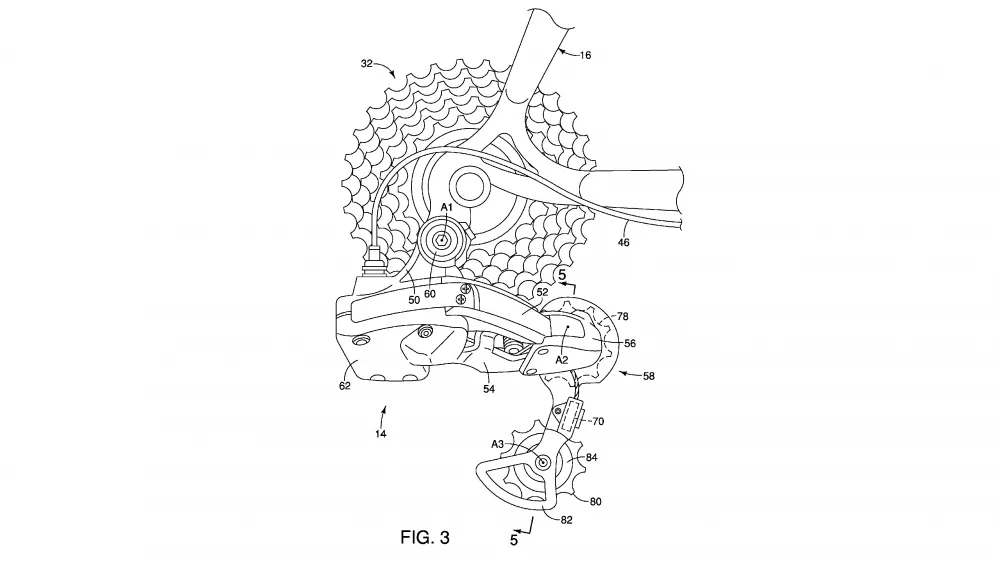Shimano Q’Auto is a new automatic-shifting system powered by a dynamo incorporated into a new rear hub that integrates with the brand’s Cues derailleurs.
Crucially, compared to existing Shimano Di2 drivetrains, the system does away with a central battery, running from a self-charging Li-ion capacitor that can store power for over a year.
As well as powering the system, the hub can control gear shifts automatically, using “over 6,500” pre-set algorithms in response to your pedalling input, speed and gradient.
The system is accompanied by a wireless shifting switch, which offers the ability to override gear selections. In turn, the Q’Auto system learns these choices, effectively customising the drivetrain to your riding.
Shimano says Q’Auto is designed for “urban, trekking and gravel” bikes, but that the system is also compatible with the brand’s complete range of Di2 shifters.
This opens the enticing possibility that Q’Auto could be rolled out to other disciplines in the future.
- Read more: We just got hands-on with Shimano Cues
Machine-learning gears

Q’Auto’s centrepiece is undoubtedly the FH-U6060 rear freehub. This pairs speed, cadence and gradient sensors with an internally housed dynamo.
The dynamo removes the need for a separate battery to be housed in the frame to power the Shimano Cues RD-U8050 rear derailleur. Instead, the small onboard lithium-ion capacitor is connected directly to the derailleur.
Shimano claims this can hold charge for up to a year, removing the need to manually recharge the derailleur.

A dedicated wireless shift switch (SW-EN605-R), which is powered by two CR1632 coin batteries, can also be used to control the system. This enables you to override the default automatic gear selection to a preferred gear.
You can also use the switch to toggle between manual and automatic shifting modes, and can customise its functions through Shimano’s E-TUBE Project app.
Shimano claims the brains of the system, which are housed inside the hub, learn from these manual inputs, producing an automatic drivetrain better matched to your riding style.
Shimano Q’Auto compatibility

While intended primarily for trekking, urban and electric bikes, the use of a standard 142x12mm thru axle and standard HG freehub body offers the tantalising prospect of combining the system with Shimano’s more performance-oriented road electronic groupsets.
There’s no word on the possibility of swapping to a Microspline freehub body for use with the brand’s other electronic gravel or MTB drivetrains.
That said, Shimano says the hub and rear derailleur are compatible with the brand’s pre-existing wireless Di2 switches and shifters – a further indication that we could see the system rolled out to 105, Ultegra and Dura-Ace Di2 levels on the road, GRX Di2 on gravel, or XTR Di2 for MTB in the future.
It’s worth remembering that the brand’s road groupsets are all currently 2x, and Shimano hasn’t confirmed yet whether the system could be adapted to accommodate a front derailleur.

At launch, the system is designed with long and short cage versions of the Cues RD-U8050 rear derailleur, which are compatible with the brand’s LinkGlide cassettes (used commonly on ebikes and some non-assisted bikes).
The 11-speed 11-50t and 11-45t cassettes, plus the 10-speed 11-48t cassette, require the use of the RD-U8050-SGS long cage derailleur, while the 10-speed 11-43t cassette uses the RD-U8050-GS short cage version.
As a result, the system is set to be seen on new urban and entry-level gravel bikes, while it will also be possible to upgrade an existing bike with the drivetrain.
Prices for the new system, as well as expected price ranges for fully built bikes, are still to be confirmed.
Haven’t we seen this before?

Shimano’s self-powered Q’Auto system might feel like a bold leap forward, but the idea has been brewing for more than a decade.
Back in 2011, Shimano filed a patent (EP2535257 A1) outlining a remarkably similar concept: a miniature dynamo integrated into a rear derailleur pulley that could charge or directly power a Di2 drivetrain.
Although the original design never made it to production, it clearly laid the groundwork for what we’re seeing today.

That patent described not only the dynamo-equipped pulley, but an entire ecosystem where derailleurs, computers and accessories could be powered from a shared energy source. At the time, it was a tantalising vision of a self-sufficient electronic bike.
Fast-forward to 2025 and Q’Auto realises much of that ambition – albeit in a more practical form.
The core principle, however, remains the same: eliminate reliance on a central battery, reduce rider maintenance and open the door to smarter, more integrated bike tech.
You may like
- Shimano finally goes wireless with new XTR Di2 groupset
- Shimano XTR Di2 M9200 review: Wireless at last, but sorry Shimano, it lacks the wow factor
- I pitted Shimano's new XTR against SRAM XX and the winner shows why innovation pays off
- I tested new Campagnolo Super Record 13, and Shimano and SRAM should be worried





